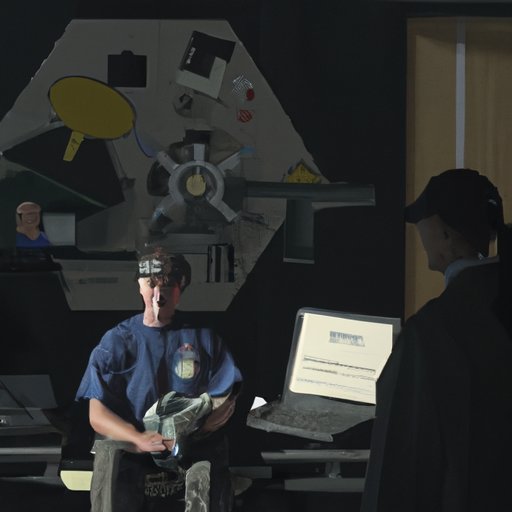
I. Introduction
Physical therapy is a growing industry that offers a rewarding and fulfilling career path. Whether you are interested in helping patients recover from injuries, surgeries, or chronic conditions, or you simply enjoy working in a healthcare setting, becoming a physical therapist can be a great choice. However, before you can embark on this journey, you need to know what it takes to succeed in this field. In this article, we will explore the essential skills you need to become a successful physical therapist, the education and certification requirements, what a day in the life of a physical therapist looks like, future trends and innovations to watch, and the importance of building a strong professional network.
II. 10 Essential Skills You Need to Become a Successful Physical Therapist
To become a successful physical therapist, you need to possess a unique set of skills. Here are the top 10 essential skills you will need:
1. Empathy and Compassion
2. Communication
3. Problem-Solving
4. Manual Dexterity
5. Physical Stamina
6. Knowledge of Anatomy and Physiology
7. Time Management
8. Flexibility
9. Patience
10. Attention to Detail
Developing these skills will help you provide top-notch care to your patients, build better relationships with colleagues, and stand out in the job market.
III. The Education and Certification Requirements for a Physical Therapist
Becoming a physical therapist requires a significant amount of education and certification. Typically, you will need to complete a doctoral degree in physical therapy, pass a certification exam, and obtain a state license to practice. It is important to note that each state has its own specific requirements for licensure, so it’s crucial to check with your state’s licensing board for more information.
To enroll in a doctoral program, you will typically need to have a bachelor’s degree (although some programs may accept students with a master’s degree) and complete prerequisite courses in subjects such as anatomy, physiology, biology, and physics. During your doctoral program, you will take courses in areas such as biomechanics, neuroscience, pharmacology, and musculoskeletal evaluation and intervention.
Continuing education is also essential for keeping up with the latest advancements and research in the field. Many physical therapists choose to pursue additional certifications or specializations, such as in geriatrics, orthopedics, or sports physical therapy.
IV. A Day in the Life of a Physical Therapist
A physical therapist’s day can vary depending on their work setting and the types of patients they see. Generally, a physical therapist will spend their day evaluating, diagnosing, and treating patients who have movement-related injuries or conditions. They will work with patients to develop individualized treatment plans, which may include exercises, stretches, manual therapy, and other modalities. Physical therapists may also perform administrative tasks, such as documenting patient progress and communicating with other healthcare providers.
Throughout their day, physical therapists may see a variety of patients, including athletes recovering from injuries, elderly patients with arthritis, and patients who have suffered an injury or undergone surgery. They may encounter challenges such as patients who are resistant to treatment, or cases that require innovative solutions.
V. The Future of Physical Therapy: Trends and Innovations to Watch
The field of physical therapy is constantly evolving, with new trends and innovations shaping the industry. Some of the latest developments to watch include:
1. Telehealth: The COVID-19 pandemic has accelerated the adoption of telehealth in physical therapy, allowing physical therapists to provide remote care to patients.
2. Virtual Reality: Virtual reality technology is being used to help patients recover from injuries and surgeries, providing a more engaging and immersive experience.
3. Wearables: Patients are using wearable technology, such as fitness trackers, to monitor their progress and stay motivated during physical therapy.
4. Artificial Intelligence: AI is being used to analyze patient data and assist with diagnosis, treatment planning, and monitoring progress.
5. Personalized Medicine: Through new research and technology, physical therapy is becoming more personalized and tailored to individual patients’ needs.
VI. The Importance of a Strong Professional Network in Physical Therapy
Building and maintaining a strong professional network is crucial for success in the physical therapy industry. A referral network can help you grow your career and expand your patient base, while building relationships with colleagues and mentors can provide valuable support and guidance.
To build a strong professional network, consider attending industry events, participating in online forums, and joining professional organizations. Don’t be afraid to reach out to other physical therapists or healthcare providers for advice or mentorship.
VII. Conclusion
Becoming a physical therapist requires a combination of education, certification, and essential skills. By developing your communication, problem-solving, and manual dexterity skills, completing an accredited doctoral program, obtaining state licensure, and building a strong professional network, you can embark on a fulfilling and rewarding career in the physical therapy industry. Stay up-to-date on the latest trends and innovations and continue to grow both professionally and personally. With dedication and hard work, you can succeed in this exciting and growing field.




